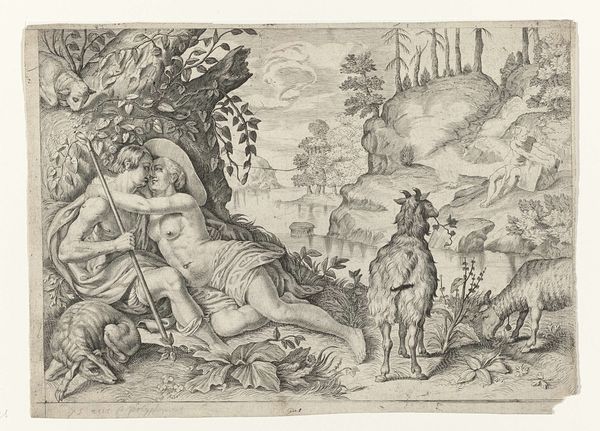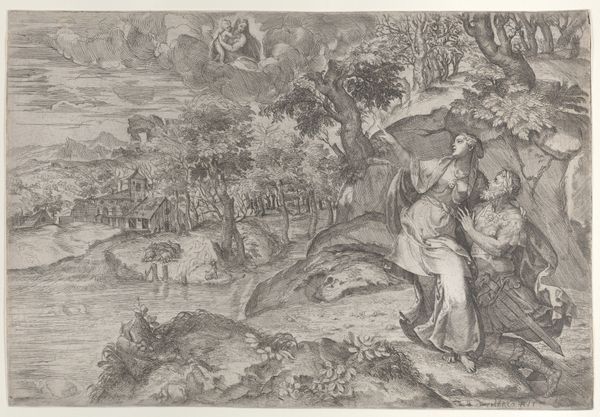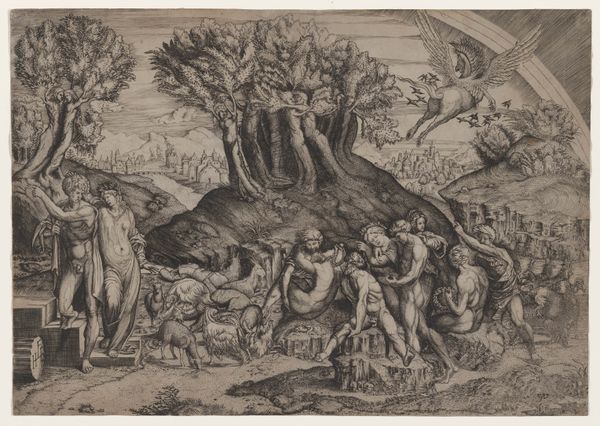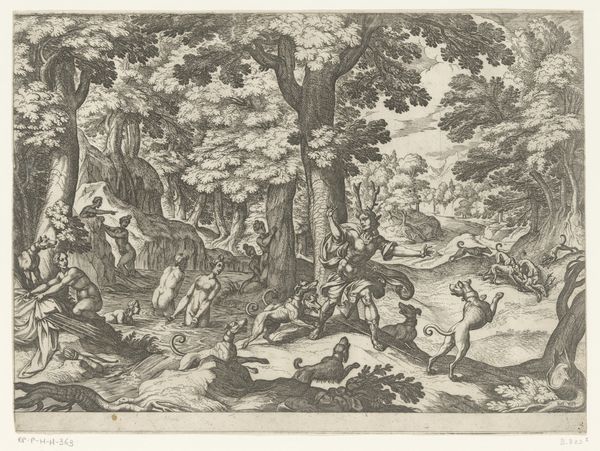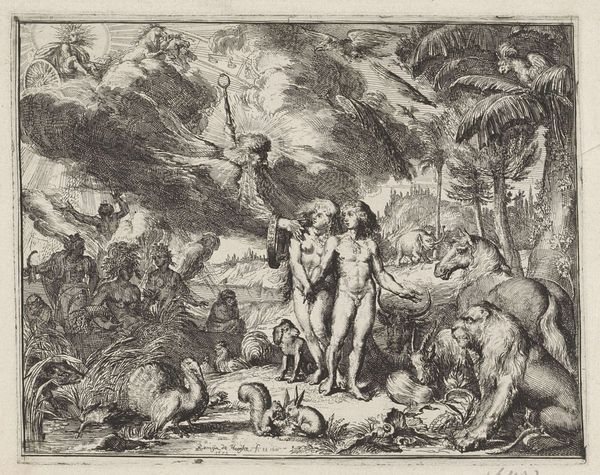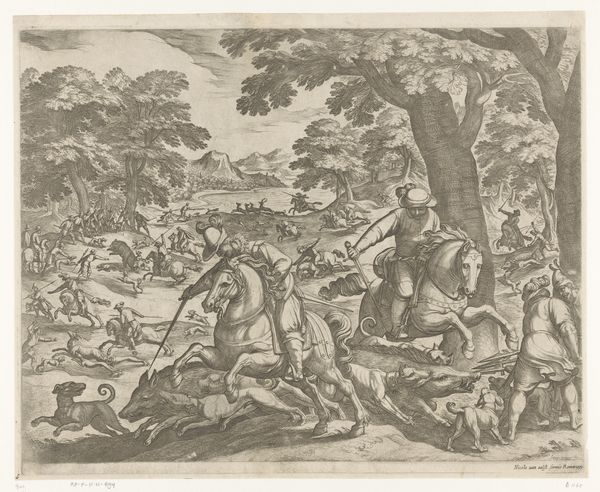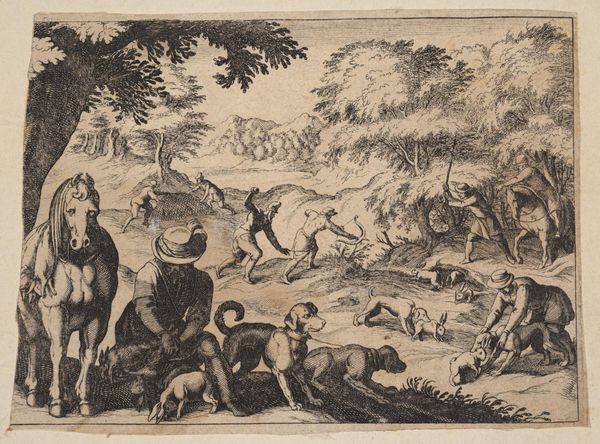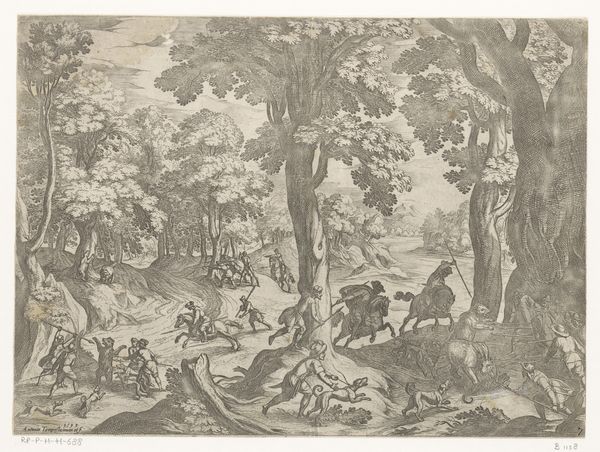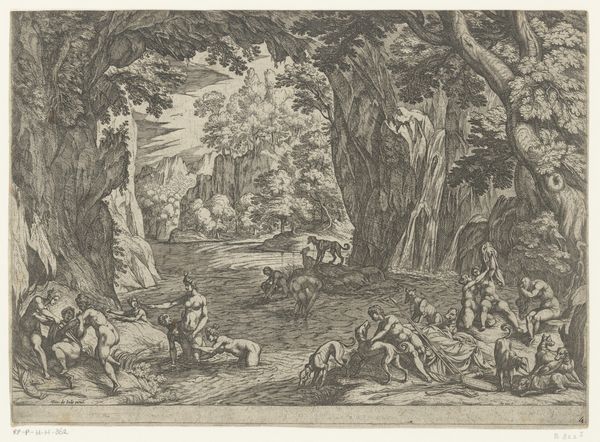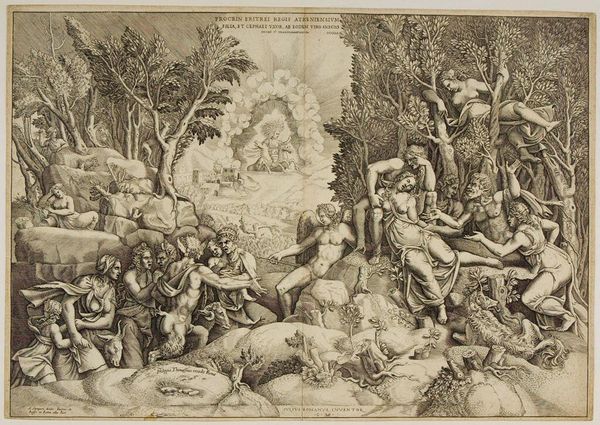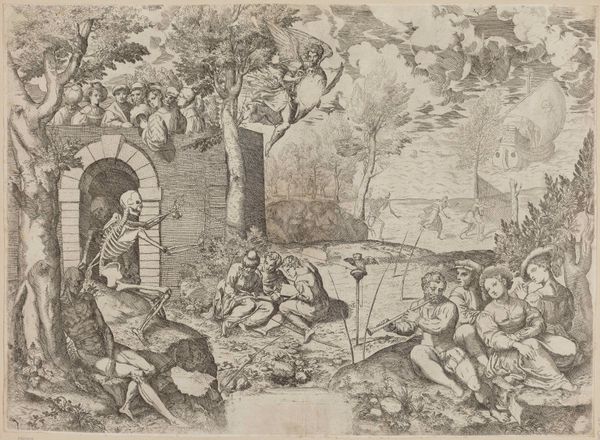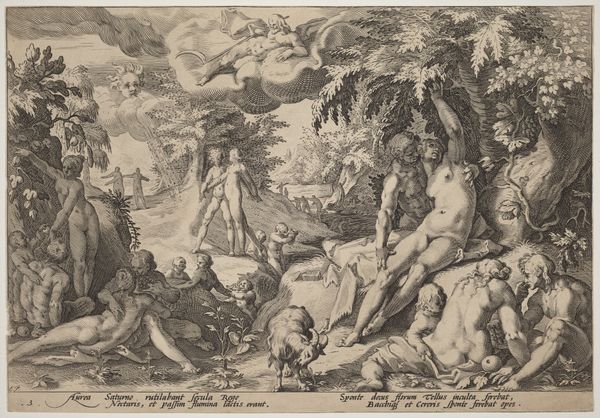
The Death of Procris; Cephalus mournig the death of Procris on the right surrounded by Cupid and mourning satyrs and nymphs, the goddess of dawn in her chariot in the background 1520 - 1582
0:00
0:00
drawing, print, engraving
#
drawing
#
allegory
#
narrative-art
#
pen drawing
# print
#
death
#
mannerism
#
figuration
#
cupid
#
pencil drawing
#
history-painting
#
engraving
Dimensions: Sheet (Trimmed): 15 1/2 × 22 1/4 in. (39.4 × 56.5 cm)
Copyright: Public Domain
Curator: Editor: Okay, so here we have Giorgio Ghisi’s engraving, "The Death of Procris," made sometime between 1520 and 1582. It’s incredibly detailed and, honestly, a little overwhelming to look at. It's all these swirling figures in this dark forest scene and overall, pretty dramatic, given the title. What strikes you about this print? Curator: I’m interested in the labor involved in producing something like this. Consider the sheer number of lines etched into that plate! What kind of workshops would have supported Ghisi? Were these family affairs or larger commercial enterprises? How were these prints consumed, beyond individual collectors? Did they function as a form of accessible art for a broader public, challenging the dominance of painting? Editor: That's interesting! I was mainly focused on the figures and trying to understand the story. Thinking about it as a manufactured object changes my perspective. Were prints like these considered as valuable as paintings, given the labor? Curator: "Valuable" is a loaded term. Economically? Perhaps, given the demand and the skill involved. But did they carry the same cultural weight? That’s a product of a very specific and constructed hierarchy of artistic mediums. These prints facilitated the circulation of visual ideas. But, to whom did such mass production techniques benefit? Editor: So you're saying that because it’s reproducible it democratizes art, but maybe exploits workers and devalues the individual artwork? Curator: Precisely. And who owns the means of artistic production at this moment in history, both socially and politically. Are there traces of social inequality embedded within the artistic representation? Think, too, about how this process compares to art production now. Editor: That gives me a lot to consider regarding prints like this one, thanks. It’s really a complex question when thinking about labour and accessibility together. Curator: Indeed, and considering such socio-economic contexts adds a lot to an otherwise, simple visual representation.
Comments
No comments
Be the first to comment and join the conversation on the ultimate creative platform.
